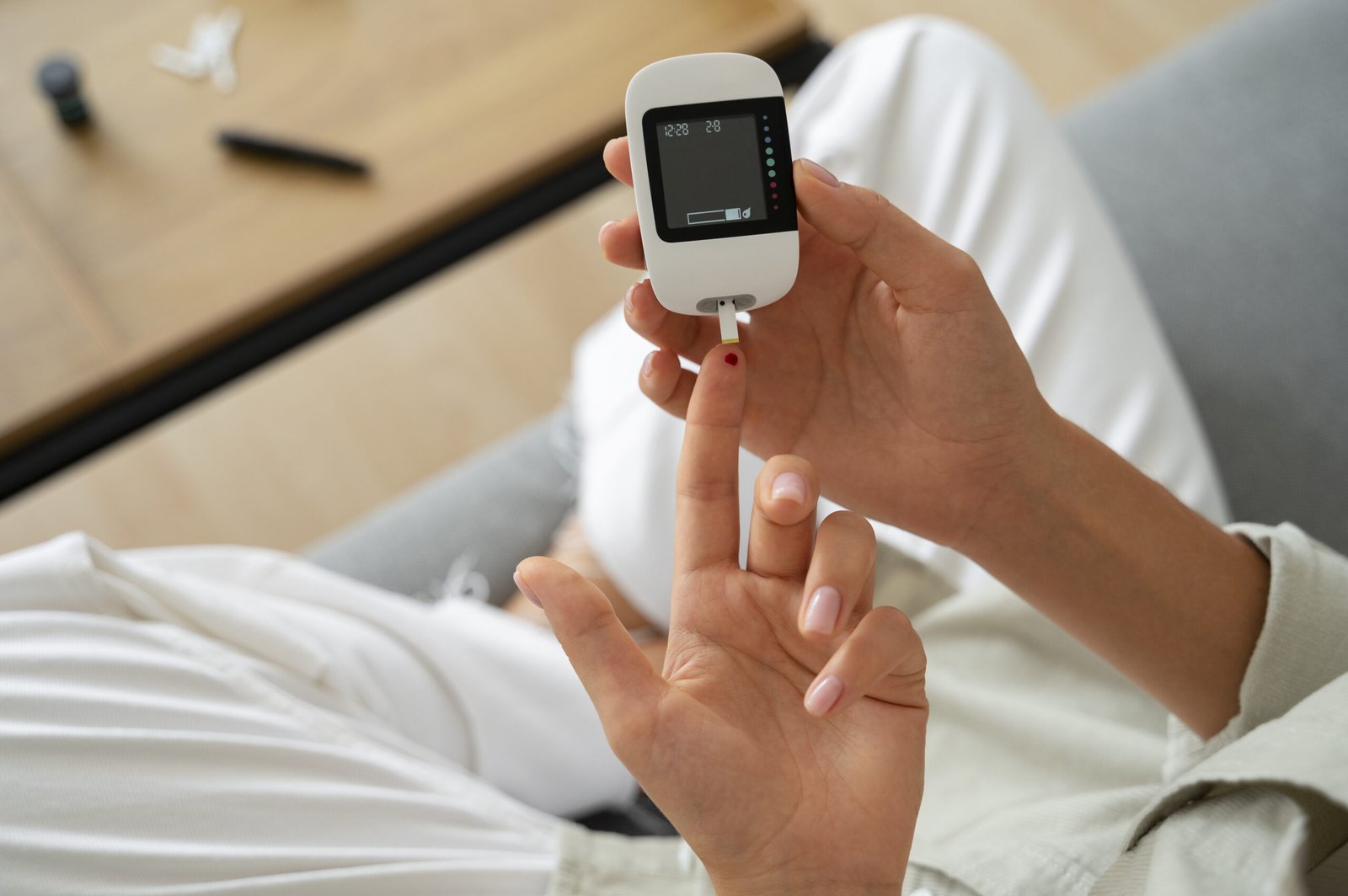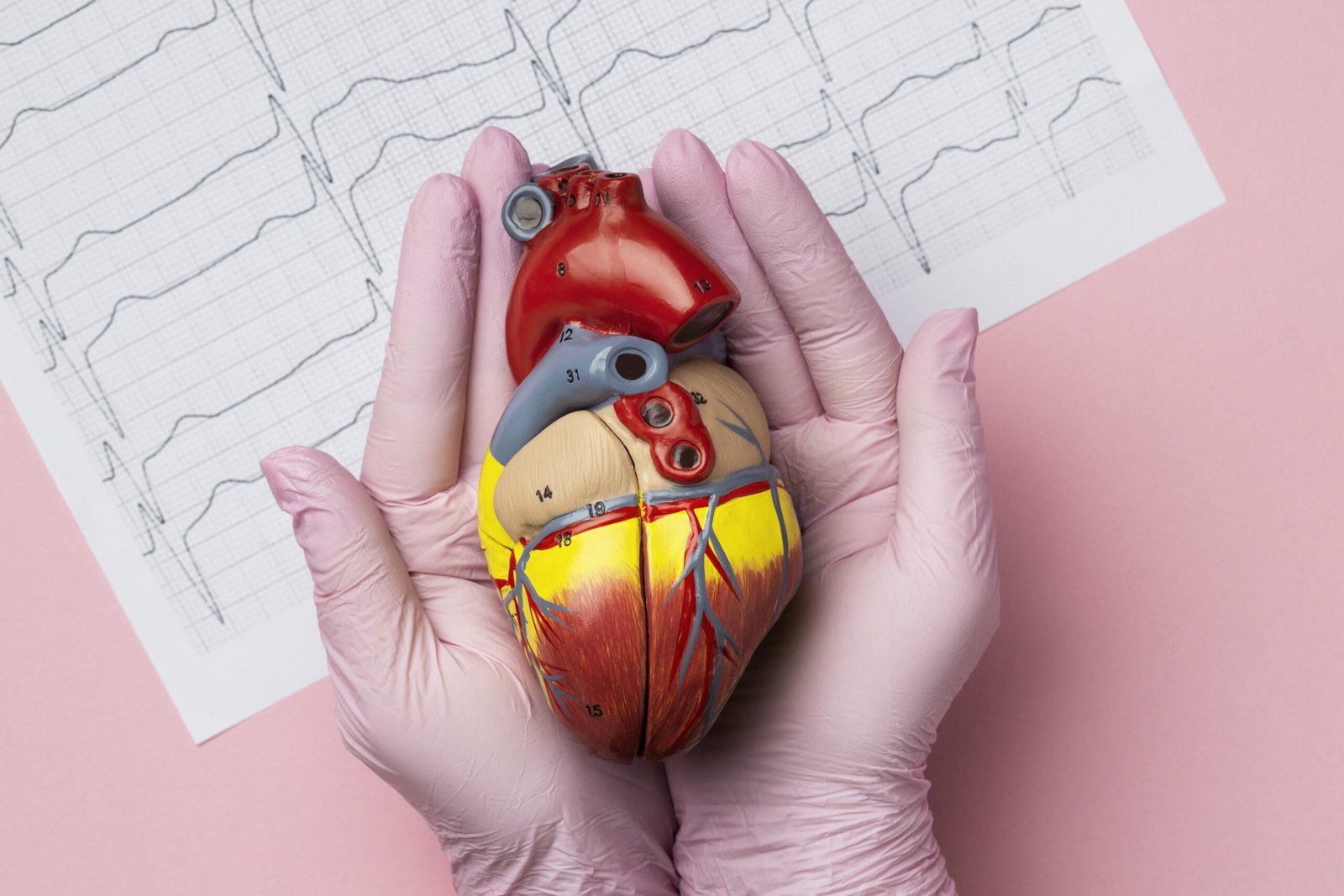Diabetes Mellitus: A Comprehensive Guide
Table of Contents
Introduction
Diabetes mellitus, commonly known as diabetes, is a chronic metabolic disorder characterized by elevated blood sugar levels over an extended period. It is a significant global health concern, affecting millions of people worldwide. Diabetes occurs when the pancreas either does not produce enough insulin or when the body cannot effectively use the insulin it produces. Insulin is a hormone that regulates blood sugar levels and allows glucose to enter cells, where it is used for energy. Without sufficient insulin action, glucose accumulates in the bloodstream, leading to hyperglycemia. Despite its prevalence and impact on health, the importance of managing diabetes is often underestimated until complications arise. In this comprehensive guide, we will explore the complexities of diabetes, covering its definition, types, historical context, prevalence, demographic data, symptoms, treatment options, prevention strategies, and concluding remarks.
Concept of Diabetes
Diabetes mellitus is a complex metabolic disorder characterized by persistent hyperglycemia (high blood sugar levels) due to defects in insulin secretion, insulin action, or both. Insulin, produced by the pancreas, is a hormone that regulates glucose metabolism. In a healthy individual, insulin helps glucose enter cells, where it is used for energy production or stored for future use. However, in diabetes, this process is disrupted, leading to elevated blood sugar levels.
There are several key concepts to understand about diabetes:
- Insulin Production and Action: In type 1 diabetes, the immune system attacks and destroys insulin-producing beta cells in the pancreas, leading to a lack of insulin production. In type 2 diabetes, the body becomes resistant to insulin or does not produce enough insulin to meet the body’s needs.
- Glucose Regulation: Glucose is the primary source of energy for the body’s cells. In diabetes, the body’s ability to regulate glucose is impaired, leading to elevated blood sugar levels. This can result in various health complications if not managed properly.
- Hyperglycemia and Hypoglycemia: Hyperglycemia occurs when blood sugar levels are too high, leading to symptoms such as increased thirst, frequent urination, fatigue, and blurred vision. Hypoglycemia, on the other hand, occurs when blood sugar levels are too low, leading to symptoms such as sweating, trembling, confusion, and, if severe, loss of consciousness.
- Complications: Chronic hyperglycemia can lead to long-term complications, including cardiovascular disease, nerve damage, kidney damage, and eye damage. Proper management of diabetes is essential to reduce the risk of these complications.
- Management: The management of diabetes involves a combination of lifestyle modifications, such as maintaining a healthy diet and regular physical activity, and medication, including insulin therapy and oral medications, to control blood sugar levels. Regular monitoring of blood sugar levels and other health parameters is also crucial for effective management.
- Prevention: While type 1 diabetes cannot be prevented, type 2 diabetes can often be prevented or delayed through lifestyle changes, such as maintaining a healthy weight, eating a balanced diet, and engaging in regular physical activity.
Overall, understanding the concept of diabetes is essential for effectively managing the condition and reducing the risk of complications. By maintaining healthy lifestyle habits and working closely with healthcare providers, individuals with diabetes can lead healthy and fulfilling lives.
Variations of Diabetes
- Type 1 Diabetes: Type 1 diabetes, also known as insulin-dependent diabetes or juvenile-onset diabetes, is an autoimmune condition in which the immune system mistakenly attacks and destroys insulin-producing beta cells in the pancreas. This results in a lack of insulin production, leading to elevated blood sugar levels. Type 1 diabetes is usually diagnosed in children and young adults, although it can occur at any age. Individuals with type 1 diabetes require lifelong insulin therapy to manage their blood sugar levels.
- Type 2 Diabetes: Type 2 diabetes, also known as non-insulin-dependent diabetes or adult-onset diabetes, is the most common form of diabetes, accounting for approximately 90% of all cases. In type 2 diabetes, the body becomes resistant to the action of insulin or does not produce enough insulin to meet the body’s needs. This leads to elevated blood sugar levels. Type 2 diabetes is often associated with lifestyle factors such as obesity, physical inactivity, and unhealthy diet. It is usually diagnosed in adults, but the prevalence among children and adolescents is increasing due to rising obesity rates.
- Gestational Diabetes: Gestational diabetes occurs during pregnancy and affects about 2-10% of pregnant women, according to the Centers for Disease Control and Prevention (CDC). This type of diabetes usually develops in the second or third trimester and is caused by hormonal changes that affect insulin action. Gestational diabetes can increase the risk of complications during pregnancy and childbirth, as well as the risk of developing type 2 diabetes later in life for both the mother and the child.
- Other Types of Diabetes: There are several other less common types of diabetes, including:
- Monogenic Diabetes: Caused by mutations in a single gene and usually diagnosed in childhood or early adulthood.
- Cystic Fibrosis-related Diabetes: A form of diabetes that occurs in people with cystic fibrosis.
- Steroid-induced Diabetes: Diabetes that develops as a side effect of long-term use of corticosteroid medications.
- Secondary Diabetes: Diabetes that develops as a result of another medical condition, such as pancreatitis or hemochromatosis.
- Pre-diabetes: Pre-diabetes is a condition in which blood sugar levels are higher than normal but not high enough to be classified as diabetes. People with pre-diabetes are at increased risk of developing type 2 diabetes, heart disease, and stroke. Lifestyle changes, such as losing weight, eating a healthy diet, and increasing physical activity, can help prevent or delay the onset of type 2 diabetes in people with pre-diabetes.
Understanding the different variations of diabetes is essential for proper diagnosis, treatment, and management of the condition. By recognizing the specific type of diabetes a person has, healthcare providers can tailor treatment plans to meet individual needs and reduce the risk of complications.
Historical Context of Diabetes
Diabetes has been recognized as a distinct medical condition for thousands of years, with early descriptions dating back to ancient civilizations. The term “diabetes” is derived from the Greek word “siphon,” referring to the excessive urination characteristic of the condition. Ancient Egyptian manuscripts dating back to around 1500 BCE describe a condition resembling diabetes, noting symptoms such as frequent urination and excessive thirst.
In the early 20th century, significant advancements were made in understanding and treating diabetes, particularly with the discovery of insulin. Prior to the discovery of insulin, diabetes was often fatal, with patients typically surviving only a few years after diagnosis. In 1921, Canadian researchers Frederick Banting and Charles Best discovered insulin and demonstrated its ability to lower blood sugar levels in diabetic dogs. This discovery revolutionized the treatment of diabetes and saved countless lives.
Since the discovery of insulin, our understanding of diabetes has continued to evolve, leading to advancements in diagnosis, treatment, and management of the condition. Researchers have identified genetic and environmental factors that contribute to the development of diabetes, leading to new insights into the disease’s pathophysiology.
Today, diabetes remains a significant global health challenge, with millions of people affected worldwide. While much progress has been made in managing diabetes, there is still much work to be done to improve access to care, develop new treatments, and ultimately find a cure for this chronic condition.
Prevalence and Demographic Data
Diabetes affects people of all ages, races, and socioeconomic backgrounds. However, certain demographic groups are at higher risk of developing the condition:
- Age: The risk of developing type 2 diabetes increases with age, particularly after the age of 45. However, due to rising obesity rates and sedentary lifestyles, type 2 diabetes is increasingly being diagnosed in younger populations.
- Gender: Historically, men were more likely to develop diabetes than women. However, this gender gap has narrowed in recent years, with the prevalence of diabetes similar among men and women.
- Ethnicity: Certain ethnic groups are at higher risk of developing diabetes. For example, African Americans, Hispanic/Latino Americans, American Indians, and Asian Americans are more likely to develop type 2 diabetes compared to non-Hispanic white Americans.
- Socioeconomic Status: People with lower socioeconomic status are at higher risk of developing diabetes. Factors such as limited access to healthcare, unhealthy diet, and lack of physical activity contribute to this increased risk.
- Family History: Having a family history of diabetes increases the risk of developing the condition. Genetic factors play a significant role in the development of type 2 diabetes, although lifestyle factors also play a role.
Impact of Diabetes: Diabetes has a significant impact on individuals, families, and healthcare systems. It is a leading cause of blindness, kidney failure, lower limb amputations, and cardiovascular disease. Managing diabetes requires lifelong commitment to lifestyle changes, medication, and regular monitoring of blood sugar levels. However, with proper management, people with diabetes can lead healthy and fulfilling lives.
Symptoms of Diabetes
The symptoms of diabetes can vary depending on the type and severity of the condition. Some people may experience mild symptoms or no symptoms at all, especially in the early stages of the disease. Common symptoms of diabetes include:
- Increased Thirst and Urination: Excess sugar in the bloodstream can lead to increased thirst and urination. The kidneys work harder to filter and absorb the excess sugar, leading to frequent urination.
- Unexplained Weight Loss: People with diabetes may experience unexplained weight loss despite eating more than usual. This is due to the body’s inability to properly use glucose for energy, leading to the breakdown of fat and muscle tissues.
- Fatigue: Diabetes can cause fatigue and weakness due to the body’s inability to use glucose effectively for energy production.
- Blurred Vision: High blood sugar levels can lead to changes in the shape of the lens in the eye, causing blurred vision. This symptom is usually temporary and resolves once blood sugar levels are controlled.
- Slow-Healing Wounds: Diabetes can affect the body’s ability to heal wounds, especially on the feet and legs. Poor circulation and nerve damage can contribute to delayed wound healing.
- Numbness or Tingling in the Hands or Feet: High blood sugar levels can damage the nerves, leading to numbness, tingling, or burning sensations in the hands and feet. This condition is known as diabetic neuropathy.
- Recurrent Infections: People with diabetes are more prone to infections, especially in the skin, gums, and urinary tract. High blood sugar levels can weaken the immune system, making it harder for the body to fight off infections.
It’s important to note that not everyone with diabetes will experience these symptoms, and some people may have symptoms that are not listed here. If you experience any of these symptoms or have concerns about diabetes, it’s essential to consult with a healthcare professional for proper diagnosis and management. Early detection and treatment of diabetes can help prevent complications and improve quality of life.
Treatment Options for Diabetes
The primary goals of diabetes treatment are to manage blood sugar levels, prevent complications, and improve quality of life. Treatment for diabetes may include a combination of lifestyle modifications, medication, and regular monitoring of blood sugar levels. The treatment approach will vary depending on the type of diabetes and individual needs.
- Lifestyle Modifications:
- Diet: A healthy diet plays a crucial role in managing diabetes. A dietitian can help create a meal plan that focuses on controlling blood sugar levels and maintaining a healthy weight.
- Physical Activity: Regular physical activity can help lower blood sugar levels, improve insulin sensitivity, and manage weight. Aim for at least 150 minutes of moderate-intensity exercise per week, such as brisk walking, swimming, or cycling.
- Weight Management: Maintaining a healthy weight is important for managing diabetes. Losing weight can improve insulin sensitivity and reduce the risk of complications.
- Medication:
- Insulin Therapy: People with type 1 diabetes and some with type 2 diabetes require insulin therapy to control blood sugar levels. Insulin can be administered through injections or an insulin pump.
- Oral Medications: For type 2 diabetes, oral medications may be prescribed to help lower blood sugar levels. These medications work in different ways, such as increasing insulin production, decreasing glucose production in the liver, or improving insulin sensitivity.
- Monitoring:
- Blood Sugar Monitoring: Regular monitoring of blood sugar levels is essential for managing diabetes. This can be done at home using a blood glucose meter.
- Hemoglobin A1c Testing: This blood test measures average blood sugar levels over the past two to three months and provides an indication of how well diabetes is being managed.
- Prevention and Management of Complications:
- Regular Check-ups: Regular visits to healthcare providers for monitoring and management of diabetes and its complications.
- Foot Care: People with diabetes should inspect their feet daily for any cuts, sores, or blisters, as diabetes can affect circulation and sensation in the feet.
- Eye Exams: Regular eye exams are important for detecting and managing diabetes-related eye conditions such as diabetic retinopathy.
- Kidney Function Tests: Regular tests to monitor kidney function, as diabetes can lead to kidney damage over time.
- Education and Support:
- Diabetes Education: Learning about diabetes and how to manage it can empower individuals to take control of their health. Diabetes education programs are available to provide information and support.
- Support Groups: Joining a support group can provide emotional support and practical tips for managing diabetes.
It’s essential for individuals with diabetes to work closely with their healthcare team to develop a personalized treatment plan that meets their needs and helps them lead a healthy life with diabetes.
Prevention Strategies
While some risk factors for diabetes, such as age and family history, cannot be changed, there are several ways to reduce the risk of developing type 2 diabetes:
- Healthy Eating:
- Balanced Diet: Eat a variety of foods, including fruits, vegetables, whole grains, lean proteins, and healthy fats. Limit the intake of processed foods, sugary beverages, and high-fat foods.
- Portion Control: Pay attention to portion sizes to avoid overeating, which can lead to weight gain and increase the risk of diabetes.
- Physical Activity:
- Regular Exercise: Aim for at least 150 minutes of moderate-intensity aerobic activity, such as brisk walking, cycling, or swimming, each week. Physical activity helps improve insulin sensitivity and can help manage weight.
- Strength Training: Include strength training exercises, such as lifting weights or using resistance bands, at least twice a week to build muscle mass and improve overall health.
- Weight Management:
- Maintain a Healthy Weight: If overweight or obese, losing even a small amount of weight can help reduce the risk of diabetes. Aim for a weight loss of 5-10% of body weight over six months.
- Avoid Crash Diets: Rapid weight loss can increase the risk of developing diabetes. Focus on making sustainable lifestyle changes instead.
- Limit Alcohol Intake:
- Moderate Drinking: If you choose to drink alcohol, do so in moderation. Limit intake to one drink per day for women and up to two drinks per day for men.
- Quit Smoking:
- Smoking Cessation: Smoking increases the risk of developing diabetes and its complications. Quitting smoking can improve overall health and reduce the risk of diabetes.
- Regular Health Check-ups:
- Routine Check-ups: Regular visits to a healthcare provider for screenings and monitoring of blood sugar levels, blood pressure, and cholesterol levels can help detect diabetes early and manage risk factors.
- Stress Management:
- Stress Reduction Techniques: Practice stress-reducing techniques such as yoga, meditation, deep breathing exercises, or spending time in nature to help manage stress levels.
- Sleep Hygiene:
- Adequate Sleep: Aim for 7-9 hours of quality sleep per night. Poor sleep habits can affect blood sugar levels and insulin sensitivity.
- Education and Awareness:
- Diabetes Education: Learn about the risk factors for diabetes and how to prevent it. Education and awareness can empower individuals to make healthier choices and reduce their risk of developing diabetes.
By incorporating these prevention strategies into daily life, individuals can reduce their risk of developing type 2 diabetes and improve their overall health and well-being. It’s important to consult with a healthcare provider before making any significant changes to diet, exercise, or lifestyle habits.
Conclusion
In conclusion, diabetes is a complex and chronic condition that requires lifelong management. While there is no cure for diabetes, it can be effectively managed with the right treatment and lifestyle changes. Understanding the risk factors, symptoms, and treatment options for diabetes is essential for preventing complications and improving quality of life.
It’s important for individuals to work closely with healthcare providers to develop a personalized treatment plan that meets their needs. This may include regular monitoring of blood sugar levels, medication, healthy eating, and regular physical activity.
It’s important to note that this article is for informational purposes only and should not be used as a substitute for professional medical advice. If you have any concerns about diabetes or its management, it’s important to seek advice from a qualified healthcare professional.
By raising awareness about diabetes and promoting early detection and treatment, we can help individuals with diabetes lead healthier, more fulfilling lives. Together, we can make a difference in the fight against diabetes.
See more in The 10 Most Common Diseases Affecting Humans Worldwide




